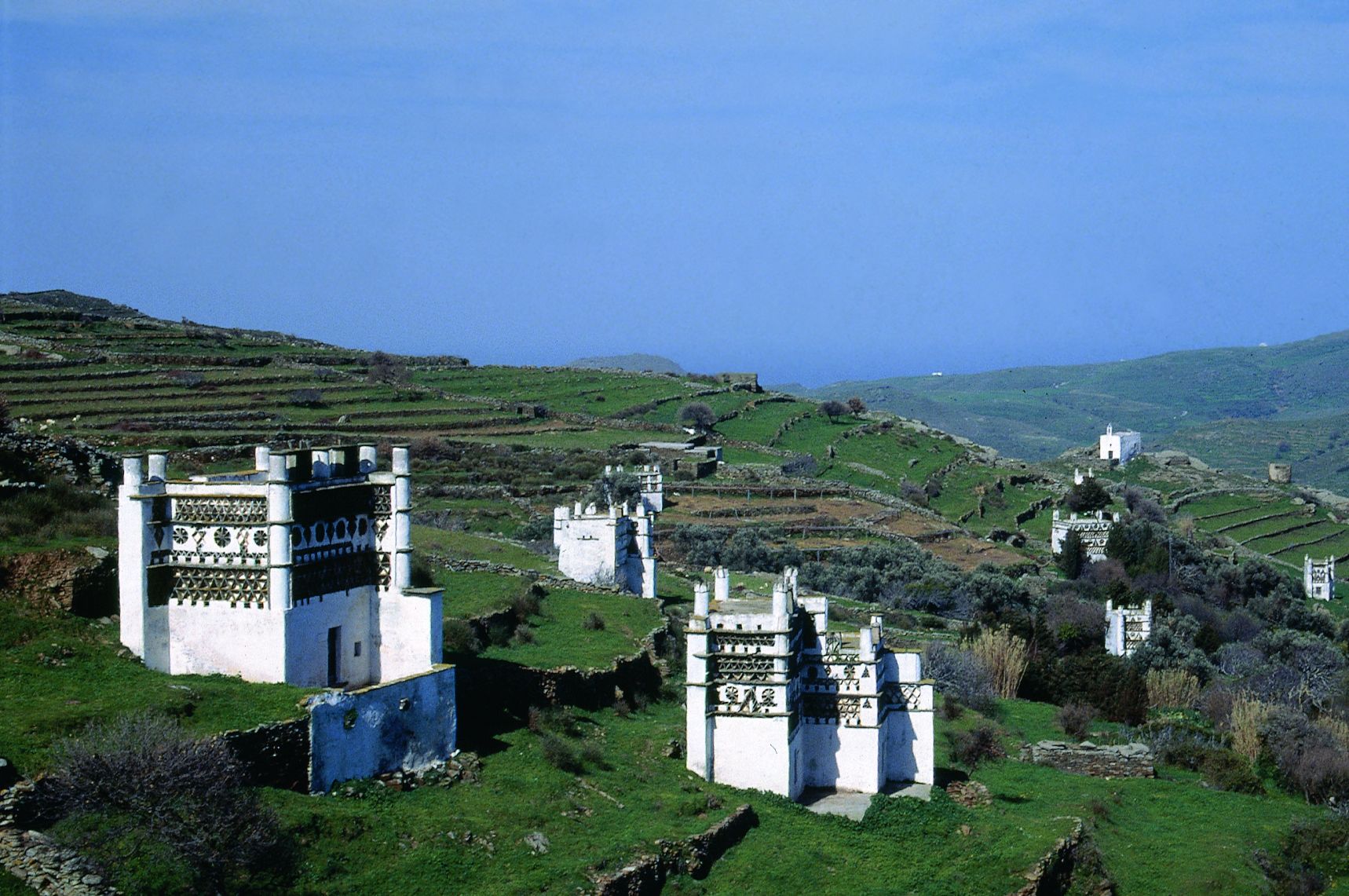The Pigeon Houses are compositions of Greek folk architecture. The first official written evidence of the existence of these houses dates back in 1726 and mentions a ruined house in Cave location near the Komi. They are stone buildings and consist of two floors.
The ground floor is used as a warehouse and the first floor is used as a pigeon house. They are famous not only for their tasty meat, but also because their droppings make great fertilizer. The houses are built mainly on slopes, looking towards the water and the most leeward. The door to the house is located on the north side.
Although pigeon houses exist on many Cycladic islands, Tinos has the biggest and most impressive ones. The number of pigeon houses found on the island is estimated to be between 800-1300. Most of them are concentrated in the central and central-eastern area of the island and in the valleys of Agapi, Potamia, the Tarambados, Leivadas and Kardianis. These are the most fertile areas of the island where there is food for pigeons and where their droppings can be used as fertilizer on the fields of agricultural crops.



